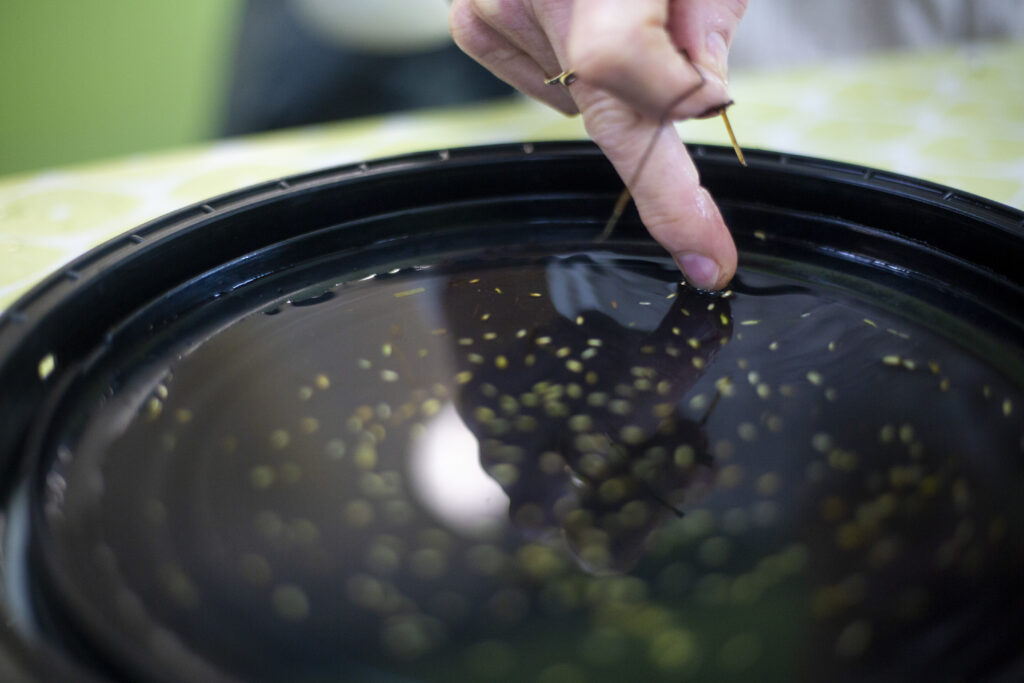OVER 4,000 Scots locals have been involved in the first full year of a major marine resoration project on the Firth of Forth.
The ‘Restoration Forth’ project – part funded by the ScottishPower foundation – aims to bring back seagrass habitats and native oyster populations to the iconic estuary.
The project is supported by up to £600,000 over three years from the Foundation’s Marine Biodiversity Fund, which was set up to help provide a lasting legacy from the UN’s COP26 climate change conference held in Glasgow in 2021.
Restoration Forth is managed by WWF in partnership with local communities and organisations and seeks to restore the seagrass which proves a useful tool in the fight against climate change.

Oyster reefs – which once flourished in the Forth – remove pollutants and provide sanctuary for a vast array of marine life.
The ScottishPower Foundation funding helped support the first year of activity, with the Restoration Forth team working with thousands of people to lay the foundations for the important restoration work.
As part of the process, 40,000 seagrass seeds have been prepped for planting, with the project team visiting Orkney and working with the local community there to collect the seeds for replanting in the Forth.
The seeds are expected to be planted in March 2023.
Over a period of six months, the team also engaged more than 4,000 people of all ages from the communities surrounding the Firth of Forth.
School pupils, university students, researchers, fishing communities and an array of local groups have learned about the plans and how they can get involved.
More than 100 events from walks and talks to seed processing days and school assemblies have taken place.
An appointed team of citizen scientists have also been working in partnership with Seawilding on the west coast of Scotland to establish processes to source native oysters for Restoration Forth.
Working in line with NatureScot and Marine Scotland’s guidelines, the team has been studying and scrubbing oysters to ensure the biosecurity of any oysters that will be relocated.
A large part of this year’s work has also focused on establishing the best locations within the Firth of Forth for the restoration to take place to ensure the best opportunities for community engagement and ecological conditions.
The locations for planting need to be suitable for growth and accessible for members of the local community, so they can engage with the project and eventually take it forward in the long-term.
Melanie Hill, Executive Officer and Trustee of the ScottishPower Foundation, said:“It’s so exciting to see the progress across the year of our first-ever Marine Biodiversity Fund project.
“Restoration Forth is supported by the biggest-ever grant awarded by the ScottishPower Foundation, and is a shining example of how we can take action now to tackle the climate emergency.
“Thriving marine environments are vital if we’re to have any chance of addressing the biodiversity and climate crises we all face.
“Restoration Forth helps to do this and more, by engaging with the local community to educate them on the importance of these habitats to the wider ecosystem and our future.
“This collaborative approach can help provide the blueprint for further marine restoration projects across the country, with ScottishPower Foundation funding supporting future generations for years to come. I can’t wait to see what comes next.”
ScottishPower Foundation’s grant was the first funding contribution towards the £2.4m total cost of the project, which aims to restore up to four hectares of seagrass and 10,000 oysters per year by the end of 2024.
Naomi Arnold, Restoration Forth Project Manager at WWF, said: ‘The level of interest and engagement in just the first year of Restoration Forth has been inspiring.
“The enthusiasm of our partners and funders but also, crucially, from members of the many communities that line the Forth showcases how a project like this can work for both the marine environment and the people who live by it.
“Restoring the seagrass meadows and oyster beds of the Forth brings a whole host of benefits, from improved water quality and increased biodiversity, to storing carbon and reduced coastal erosion.
“After a year of hard work and preparation, we are excited that this spring will see the start of seagrass planting and oyster deployment.
“A start that will help breathe new life back into the Forth.”

